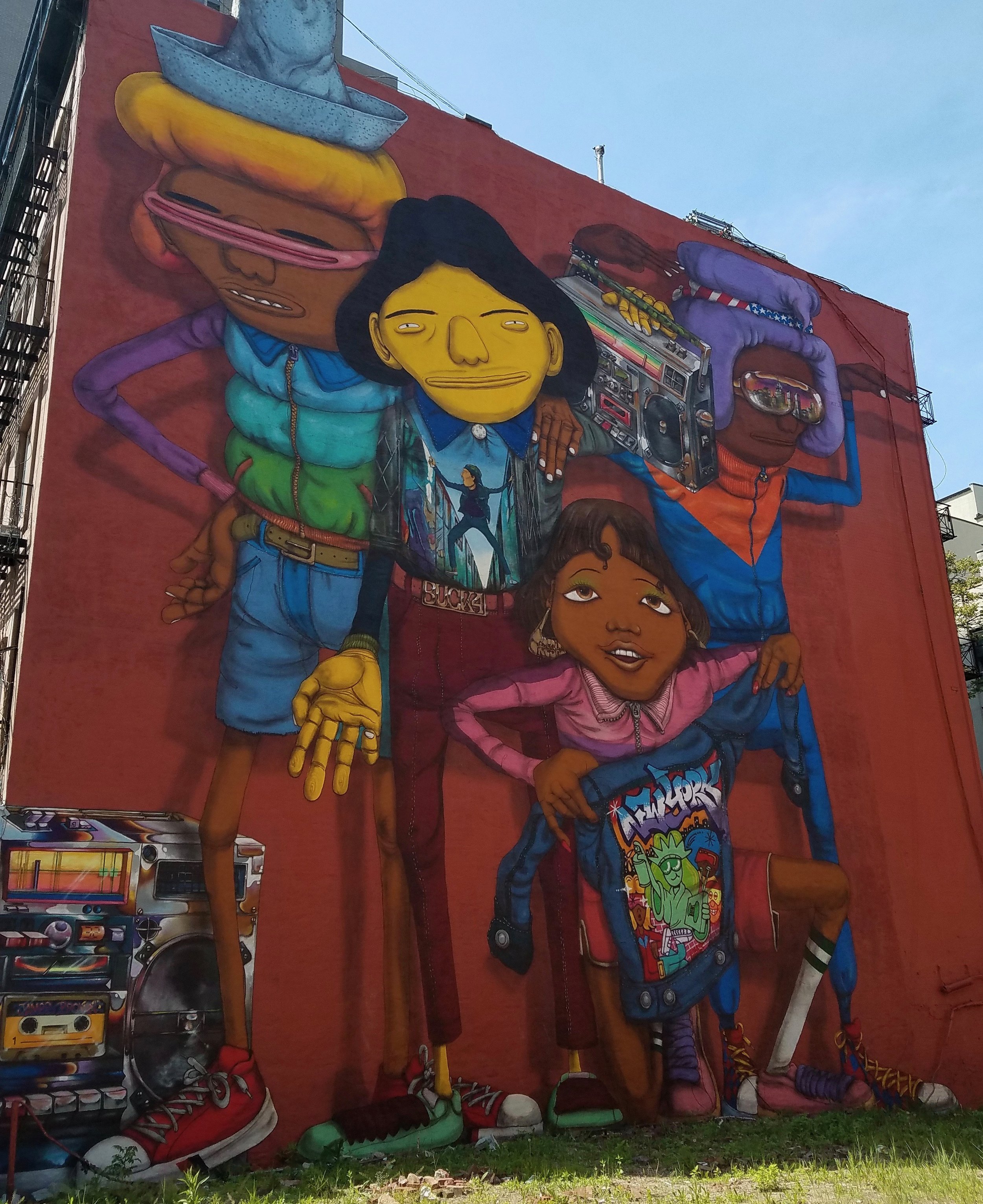OSGEMEOS, translated as “The Twins," are Brazilian artists Gustavo and Otavio Pandolfo, who have worked together since birth. They grew up in the district of Cambuci (SP) and developed their own artistic language. With their family's encouragement and the influence of hip hop culture in Brazil in the 1980s, they found a "direct connection to their dynamic and magical world and a way to communicate with the public." In this piece on 14th Street in Manhattan, OSGEMEOS depicts break dancers from the 1980s.
USCIS: Changes to Ink Color for Some Immigration Stamps
This is, of course, more secure than the red ink.
After changing the color of the US Citizenship & Immigration Services (USCIS) Request for Evidence pages from blue to yellow, I-797 receipt notices from swirly paper (an industry term) to white, and redesigning the Green Card so that it is actually green, USCIS has announced another major design change: this time from red to blue. Effective July 1, 2014, USCIS is now reporting, the "older secure red ink was retired" and they began using a "new secure blue ink" for some immigration stamps, including:
- Department of Homeland Security (DHS) Parole Stamp;
- Temporary I-551 Alien Documentary Identification and Telecommunication (ADIT) Stamp;
- Refugee Stamp (Section 207);
- Asylum Stamp (Section 208); and
- Initial / Replacement Form I-94 Stamp.
USCIS advises that employers should be aware of this change when examining employee documents during the Form I-9, Employment Eligibility Verification process. USCIS also notes that employers "must accept the documents presented by a worker when completing Form I-9 as long as those documents appear genuine on their face and relate to the person presenting them."
We will keep our readers updated on any future major design changes.


